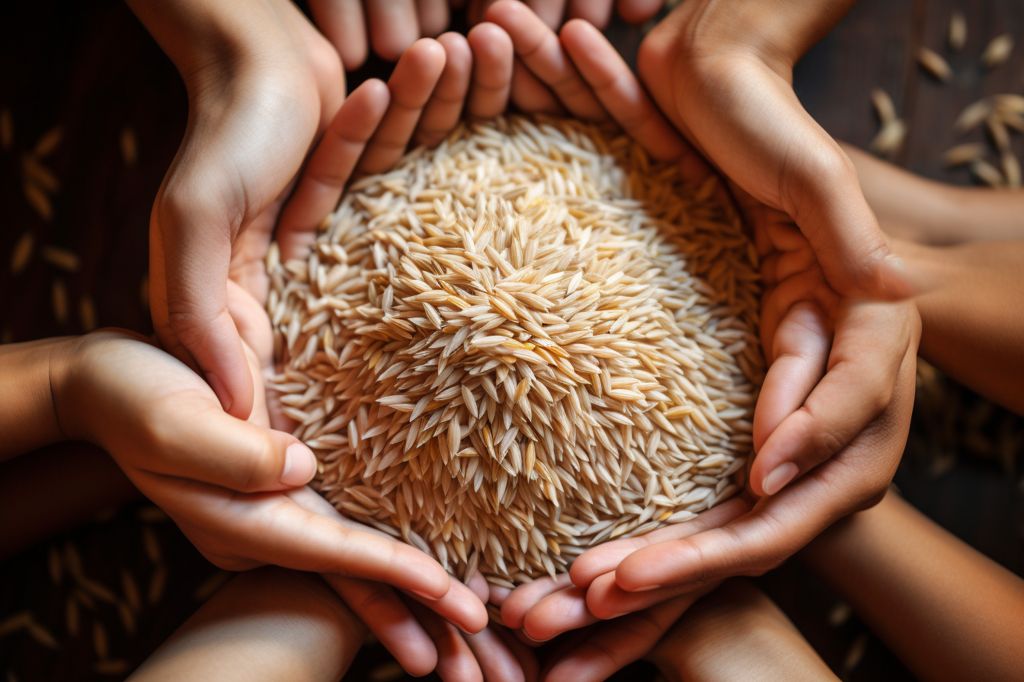The devastating floods in the Western Cape have left hundreds of residents struggling in the aftermath. The overflowing Kuils River and clogged drains have caused flooding in densely inhabited areas, forcing many residents to seek shelter in community halls. Civic organizations and authorities are providing aid to those affected, including hot meals, food parcels, blankets, and mattresses, but the flooding has highlighted the precarious living conditions of numerous communities. Despite the challenges, the Western Cape communities are demonstrating remarkable resilience and determination in the face of adversity.
A Rude Awakening
Nozukiso Gwe’s peaceful morning was abruptly interrupted when she discovered her home flooded. Shoes floating and her cat desperately clinging to the bed, Gwe and her two young children had no choice but to evacuate their residence in Qanduqandu, Khayelitsha due to the disastrous floods that engulfed the Western Cape last Monday. Gwe’s narrative is merely one among hundreds emerging from the region as residents grapple with the devastating aftermath.
Qanduqandu, a densely inhabited area in Khayelitsha, saw conditions deteriorate as clogged sewage and stormwater drains exacerbated the flooding. Locals sought shelter at the White House community hall after the Kuils River spilled into their homes. According to community leader Phindile Gilimane, the hall was teeming with displaced individuals, with some even resorting to sleeping on chairs or waiting outside.
The overflowing Kuils River, known colloquially as the Blowy River, is due in part to its overgrown and congested state. Those living in shacks have urged the City of Cape Town to regularly clear reeds and debris to avoid such overflows during heavy rainfall. For now, houses remain underwater, and those affected are in desperate need of provisions like food and blankets.
A Community in Crisis
Qhamana Muna, a mother to an infant, joins countless others facing the consequences of the floods. Her groceries, bed, and sofa were all soaked, forcing her baby to sleep on a chair as it cried from hunger throughout the night.
In response to the catastrophe, the City of Cape Town has deployed damage assessment teams and initiated clean-up operations throughout the metro. These teams have visited multiple informal settlements, including Hangberg, Grassy Park, Kampies, Egoli, Oasis, Ocean View, Fish Hoek, Dunoon, and Kraaifontein, among others. A City press release estimates that around 12,000 people have been affected by the storm.
Civic organizations have stepped up to provide hot meals, food parcels, blankets, and mattresses for those impacted by the floods. Mayco Member for Human Settlements, Carl Pophaim, noted that teams have worked continuously to help residents with materials, relocation, and emergency flood kits.
In areas where water evaporation is slow due to soil composition, city teams are contemplating pumping the water out where possible. Pophaim also emphasized that the South African Social Security Agency (SASSA) is the primary relief authority, encouraging them to expedite their response.
Facing the Future
The flooding has also highlighted the precarious living conditions of numerous communities. Around 60% of the 186 new settlements that emerged during the Covid pandemic can be found in high-risk zones, such as wetlands. To accommodate those at risk, an estimated 500 hectares of land would be needed.
On Tuesday, Western Cape MEC of Local Government, Environmental Affairs, and Development Planning, Anton Bredell, reported that over 6,000 people in Cape Town and 550 in the Cape Winelands have been affected by the extreme weather. Tragically, eight deaths occurred in Cape Town, with four individuals still missing in rural areas.
Provincial and local authorities are working tirelessly to clear roads, mend bridges, and deliver food to isolated towns. The Western Cape Department of Transport and Public Works disclosed that more than 80 roads were closed, but the situation is constantly evolving. Additionally, 16 schools in primarily rural areas have been shut down, while 152 schools have experienced structural damage.
To manage donations, the Western Cape government is collaborating with the South African Red Cross Society. Collection points have been set up in Wynberg, Greyton, Hermanus, and Knysna, with blankets, water, dry and non-perishable food, baby food, and toiletries among the essential items needed.
As the floodwaters gradually recede, the strength and determination of the Western Cape communities become increasingly apparent. The experiences of individuals like Nozukiso Gwe and Qhamana Muna demonstrate the remarkable human ability to persevere and adapt in the face of adversity. With time and the collective efforts of both residents and authorities, the Western Cape is sure to overcome these challenging circumstances and continue to prosper.
1. What caused the floods in the Western Cape?
The floods in the Western Cape were caused by the overflowing Kuils River and clogged drains, exacerbated by heavy rainfall, which led to flooding in densely inhabited areas.
2. How many people were affected by the floods?
Around 12,000 people were estimated to have been affected by the floods according to a City press release.
3. What kind of aid are civic organizations and authorities providing to those affected by the floods?
Civic organizations and authorities are providing aid in the form of hot meals, food parcels, blankets, and mattresses for those impacted by the floods.
4. How are authorities responding to the floods?
The City of Cape Town has deployed damage assessment teams and initiated clean-up operations throughout the metro, and city teams are contemplating pumping the water out where possible. In addition, the South African Social Security Agency (SASSA) is the primary relief authority.
5. What has the flooding highlighted?
The flooding has highlighted the precarious living conditions of numerous communities, particularly those living in high-risk zones such as wetlands.
6. How many people have been affected by the extreme weather in the Western Cape?
Over 6,000 people in Cape Town and 550 in the Cape Winelands have been affected by the extreme weather, according to Western Cape MEC of Local Government, Environmental Affairs, and Development Planning, Anton Bredell.
7. How many schools have been affected by the floods?
152 schools have experienced structural damage and 16 schools in primarily rural areas have been shut down.
8. How can people donate to help those affected by the floods?
The Western Cape government is collaborating with the South African Red Cross Society to manage donations, with collection points set up in various locations. Essential items needed include blankets, water, dry and non-perishable food, baby food, and toiletries.








